Farming carbon
31 July 2013
Climate change is causing the Earth to quickly heat up as humans produce more and more gases that trap heat in our atmosphere, like carbon dioxide. Now, a team of German researchers have suggested a way to remove carbon dioxide from the atmosphere, using a process they call carbon farming. “Carbon farming addresses the root source of climate change: the emission of carbon dioxide by human activities,” says Klaus Becker, one of the German scientists. The team has shown that we can remove carbon dioxide from the atmosphere by planting the tree Jatropha curcas over a large area. This small plant is very resistant to heat and, just as long as it has some freshwater, can grow in tropical deserts, areas that are not used for food farming. The scientists found that one hectare of Jatropha curcas (about the size of a rugby pitch) could capture 25 tonnes of carbon dioxide from the atmosphere (that is the weight of 250 baby elephants) in one year! If Jatropha curcas was planted over 3% of the Arabian Desert, that’s almost 70,000 km2 of desert (1 km2 is roughly 100 rugby pitches). This is a massive area but, in comparison to the area of the Arabian Desert, it’s tiny! The trees could absorb the same amount of carbon as that produced by motor vehicles in Germany over 20 years. At the moment, carbon farming is just a hypothesis, but Klaus and his colleagues are trying to encourage governments to pilot this to allow more research into whether it will work in real life.Find out more
What is Jatropha curcas?
Jatropha curcas is a small tree that produces flowers and seeds. It is poisonous, and can grow up to 6 metres high. Because it is very resistant to aridity, the severe lack of water in an area of land, it can grow in deserts. Its seeds contain oil, which can also be used as a biofuel, and is used in some diesel engines. It was originally found in America’s tropical regions, including Mexico, but has since been grown across the world in the subtropics.
How does Jatropha curcas capture and help store carbon?
Photosynthesis is the process by which organisms (for instance plants) create their own food from carbon dioxide and water. To create something, we also need energy. Organisms that use photosynthesis to create their food use energy from the Sun in the form of light. Plants, including Jatropha curcas, use photosynthesis to change carbon dioxide from the air into sugars containing carbon and release oxygen back into the air in the process. The plants then use the sugars as food, to help them grow, trapping the carbon inside their bodies.
When plants lose their leaves or die they decompose (or rot) into the plant’s smallest building blocks, atoms, including organic carbon (something that is present in all living things) and this is stored in the ground in soils. Increasing organic carbon in soil decreases carbon dioxide in the atmosphere and increases soil quality. Organic carbon remains in the soil until other organisms are able to eat and digest it. The deeper soil is buried or left undisturbed, the longer it will store carbon. If the soil is disturbed, for instance through farming, then this will increase the chance of the carbon being eaten and digested by other organisms and released back into to the atmosphere as carbon dioxide and methane.
Print version
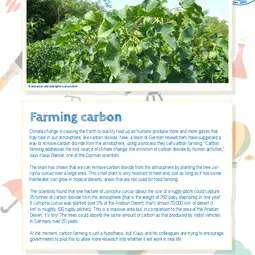
This is a kids' version of the EGU article: 'Farming carbon'. It was written by Jane Robb and reviewed for scientific content by Ioannis Baziotis and Daniel Hill and for educational content by Sally Dengg.
Translations
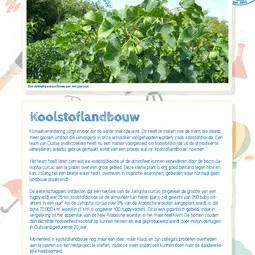
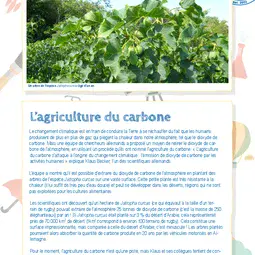
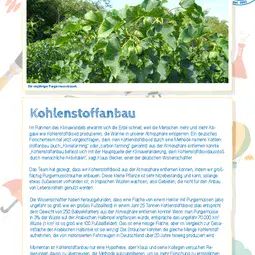
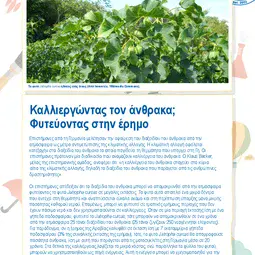
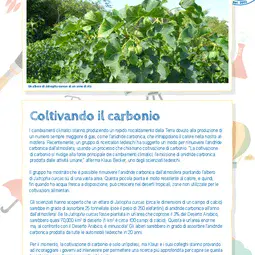
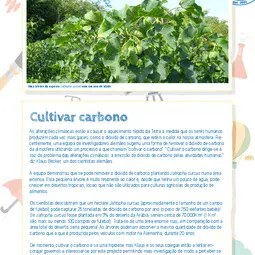
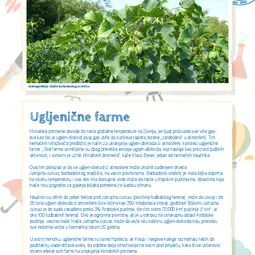
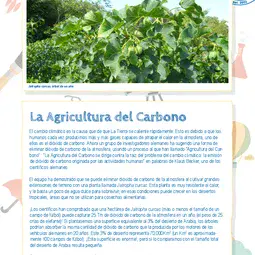
All English-language Planet Press releases are carefully edited, reviewed and proofed, by scientists, educators and EGU staff. Please note that once translated, Planet Press releases receive no further checks from EGU staff. For this reason, we cannot guarantee their accuracy, though we trust the quality of our voluntary translators and are grateful for their work.

